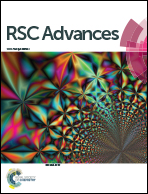Implications of designing clarithromycin loaded solid lipid nanoparticles on their pharmacokinetics, antibacterial activity and safety
Abstract
The major obstacles for treatment of intracellular infections with clarithromycin are poor gastrointestinal solubility, short half-life (3–4 h), low oral bioavailability and hepatotoxicity. Therefore, clarithromycin loaded solid lipid nanocarriers (CLA-SLNs) were engineered by an emulsification solvent evaporation method to improve CLA in vivo pharmacokinetics and safety. Various formulation variables such as type of surfactant, concentration of surfactant, binary lipid ratio, continuous phase volume and sonication time were optimized considering particle size and entrapment efficiency as quality parameters. The optimized CLA-SLN formulation exhibited a maximum entrapment efficiency of 84 ± 9% and smallest particle size of 307 ± 23 nm with a zeta potential of −29 mV. Physicochemical characterization of CLA-SLNs by differential scanning calorimetry and powder X-ray diffraction confirmed entrapment of CLA and its phase transformation from crystalline to amorphous in the SLN formulation. Morphological characterization revealed a smooth and spherical shape of the optimized CLA-SLNs which prolonged the controlled diffusion of the drug upto 24 h. In vitro antibiofilm activity disclosed the higher potential of CLA-SLNs in biofilm eradication at lower drug concentration (40 μg ml−1) compared to free CLA (140 μg ml−1), which was confirmed by SEM images. A pharmacokinetic study in wistar rats depicted higher Cmax (2.3-fold), Tmax (2-fold), MRT (1.4-fold) and almost 5-fold improvement in relative oral bioavailability of CLA on oral administration of CLA-SLNs. Furthermore, cytotoxicity studies in macrophage cell line and repeated oral dose toxicity study confirmed the safety of the CLA-SLN formulation. In conclusion, CLA-SLNs can serve as a superior carrier system with high oral bioavailability of CLA and can improve the therapeutic potential of CLA in treatment of intracellular infections.


 Please wait while we load your content...
Please wait while we load your content...